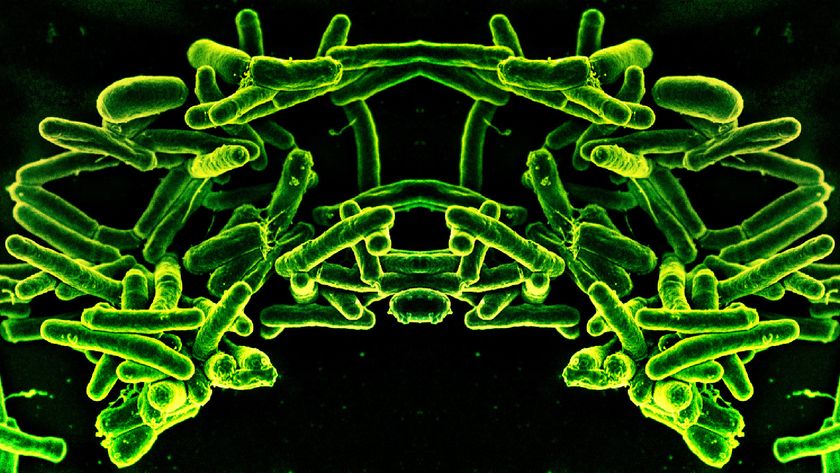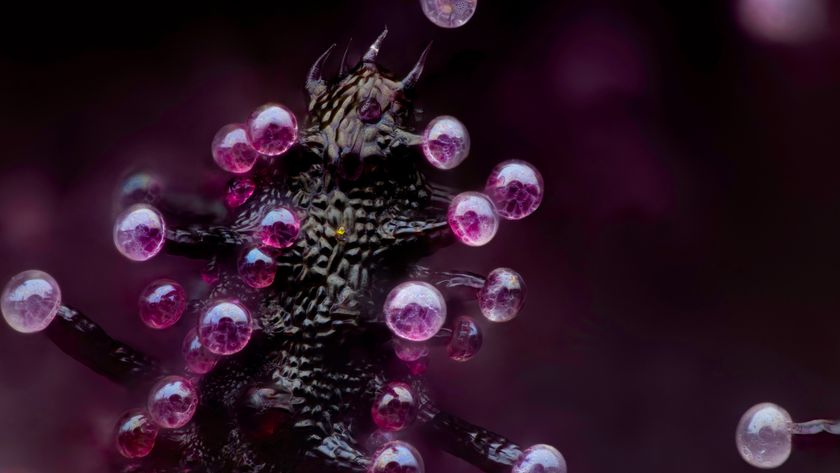What a Jolt! Microbe Lives on Caffeine
Picture a teeny-tiny "bug" gulping down espresso … all day. A newly discovered bacterium lives on this stuff, using specialized digestive enzymes to break down the caffeine into body-growing nutrients.
"We have isolated a new caffeine-degrading bacterium, Pseudomonas putida CBB5, which breaks caffeine down into carbon dioxide and ammonia," said Ryan Summers, who presented his research this week at the 111th General Meeting of the American Society for Microbiology in New Orleans.
As for how much of a java jolt this microbe can handle, Summers said it can grow in up to at least 2.5 grams/Liter of caffeine (which is toxic in high amounts to most bacteria), while a cup of coffee can contain up to 0.8 g/L, Summers said. [Extremophiles: World's Weirdest Life]
"So these little cells are eating up quite a bit of caffeine," Summers told LiveScience in an email.
While scientists have previously found other bacteria that can live on caffeine, they didn't know how it was done.
Now Summers, a doctoral student at the University of Iowa, and his colleagues have identified three enzymes — and the genes pulling their strings — that are responsible for breaking down the caffeine molecule, which is made up of carbon, nitrogen, hydrogen and oxygen. These are all necessary nutrients for cell growth.
"There are a few other elements that are also necessary in small amounts, however carbon and nitrogen are the most important," Summers said. "Because caffeine has so much carbon and nitrogen, CBB5 is able to grown by breaking the molecule completely down."
Sign up for the Live Science daily newsletter now
Get the world’s most fascinating discoveries delivered straight to your inbox.
Specifically, the enzymes remove carbon-hydrogen clusters called methyl groups from the main molecule, using the results for food.
The researchers aren't certain as to why the bacterium evolved to grow on caffeine. "There are many plants that produce caffeine, so there might have been some from decomposed plant matter," Summers said. "Caffeine also ends up in the environment from industrial wastes and human wastewater." With its prevalence in the environment, Summers said, he isn't surprised to find bacteria that can "eat" caffeine.
In fact, bacteria have been found chowing down on some odd, and often toxic, substances. For instance, some bacteria feed on methane, a greenhouse gas; others live off of toxic chemicals, such as PCBs and chemical solvents.
Follow LiveScience for the latest in science news and discoveries on Twitter @livescience and on Facebook.
Jeanna Bryner is managing editor of Scientific American. Previously she was editor in chief of Live Science and, prior to that, an editor at Scholastic's Science World magazine. Bryner has an English degree from Salisbury University, a master's degree in biogeochemistry and environmental sciences from the University of Maryland and a graduate science journalism degree from New York University. She has worked as a biologist in Florida, where she monitored wetlands and did field surveys for endangered species, including the gorgeous Florida Scrub Jay. She also received an ocean sciences journalism fellowship from the Woods Hole Oceanographic Institution. She is a firm believer that science is for everyone and that just about everything can be viewed through the lens of science.












